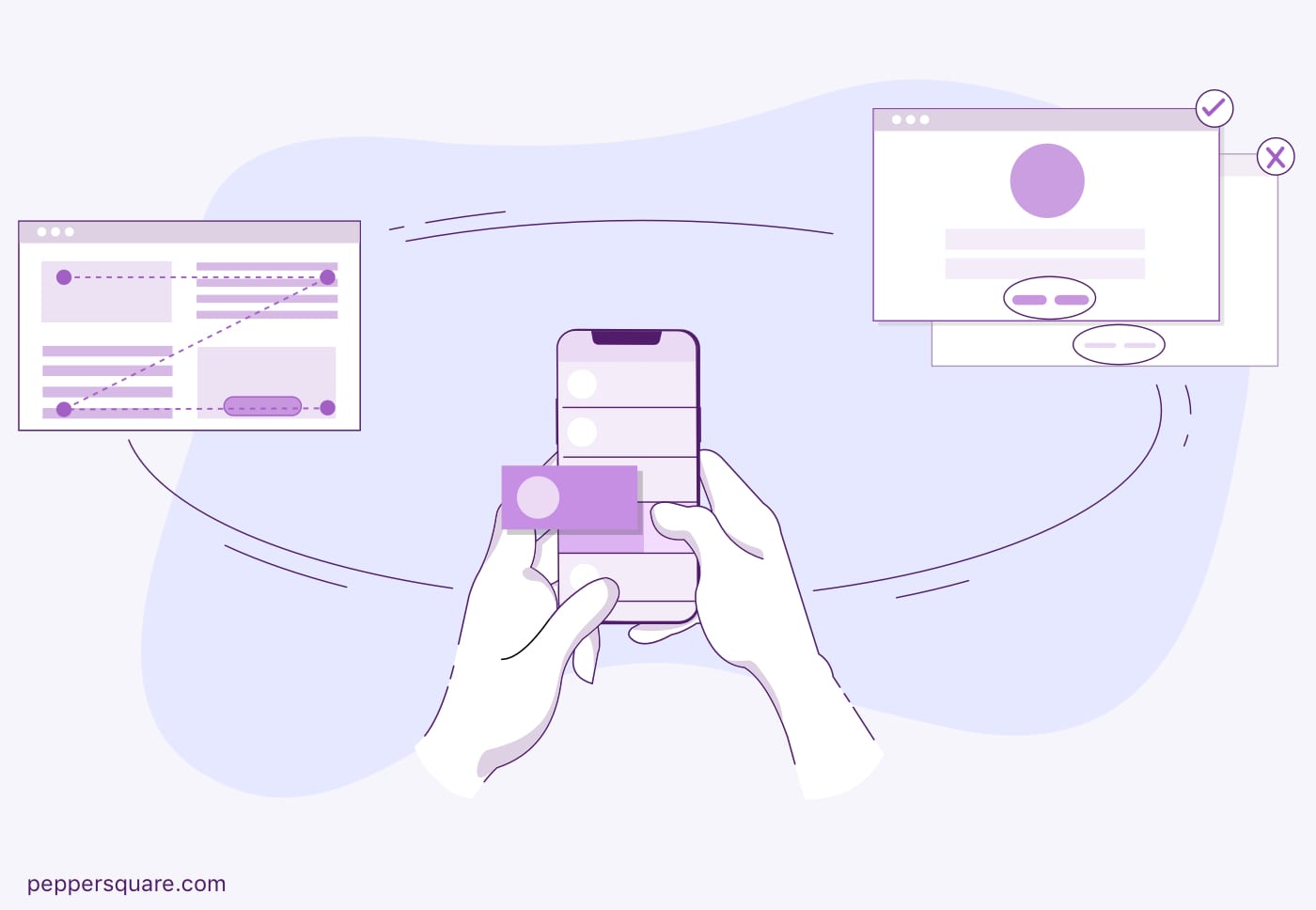
We are in a digital fray where UX UI design is an essential feature for every industry. One of the industries where screen and user interface (UI) is having a makeover would be the automotive industry. It is a great way to create a seamless experience that has enabled manufacturers to produce lasting impressions.
Besides loading a car with hardcore features relating to its speed, comfort, and engine performance, manufacturers are also looking for a customer experience via an intuitive interface. And more than just a new-age requirement it also assists the driver in many ways during all commute hours.
What is Automotive UI?
The need for a user interface in vehicles arrived for two specific reasons.
- Dashboard to gain engine information.
- Entertainment
And once both these requirements were combined, we got an infotainment system now broadly classified as Automotive UI. Thus, the birth of Automotive UI within UI/UX designing that deals with creating a user interface for an automobile’s infotainment system.
For auto enthusiasts and top players in the automotive industry, this is a great opportunity to differentiate. While it isn’t new, it gets renewed every time a new car enters the market.
For example, the 2023 Cadillac Escalade (as with many of the top-end models of Mercedes, BMW, etc.), comes with three curved OLED displays totaling 38.3 inches that support Surround Vision Recorder, giving a 360-degree view for the driver.
This is one of the features that employ visual cameras placed around the car and gives you a live feed for better control during parking. The extensive UI allows drivers to get the perfect image. And it is one of the features that could give a great automotive UI experience.
Is Automotive UI different from Mobile UI?
While there are many similarities between automotive UI and mobile UI, the differences are key in driving both segments.
For mobile UI, you have active players like Apple and Android seamlessly setting the standard. Screen sizes are largely the same for the UX UI designers to play with.
However, automotive UI is more of a scattered market because every company, thanks to its respective department, comes with its products to fight competition. And the screen size varies anywhere between 7”- 17”. Therefore, extensive market research, product placement techniques, and in-depth UX knowledge are required to design a best-in-market automotive UI customer experience.
Top Automotive UX Challenges
Though there is a predictable target audience, UI / UX designers face quite a few challenges while designing an automotive interface. Considering the difference in requirements between an automotive and a mobile app, here are some of the challenges that designers need to overcome.
Bidding adieu to traditional designs
One of the most prominent challenges designers will face is trying to stick to the main goals of UX designing.
While traditional methods are meant to increase the engagement level of the design engaging, automotive UX wants its drivers to concentrate on the road. Everything could be a distraction, so the motive must be to create a good design that entertains and informs, without distracting the driver.
So, the objective is to encourage the driver to concentrate on the road and receive information at a glance.
This makes the work of UX designers complicated because they must ensure:
- Drivers are aware of when they change lanes.
- The seatbelt and speed precautions are notified.
- Display environmental sensors without distraction.
Infotainment systems for different user experiences
In-car Infotainment systems absorb information and provide entertainment, making it a complex interface. And thus, it stands out as another challenge that designers must design, considering different user experiences.
Infotainment systems also come with multiple use cases making it important for designers to look into the features and understand the priority hierarchy. However, safety and navigation can be classified as the most important ones.
The Best Infotainment Systems in 2023
Creating the best automotive UI or enabling a great touchpoint experience involves creations that are a class apart. And with the exceedingly feature-filled automotive industry, in-car infotainment systems need to constantly update themselves.
Here are a few of the best in-car infotainment systems that the world looks up to.
Mercedes-Benz MBUX
MBUX, or the Mercedes-Benz User Experience, is an infotainment system that has all the features that you will ever need. With a top-notch UI, the device goes on to showcase its caliber with,
- Augmented reality navigation
- Customizable gauges
- Voice assistant
- Interior assistant and more
The user interface, which includes a touchscreen display, is quick and responsive and stands out as the best assistant you can ever have while driving a car.
Stellantis UConnect
Stellantis UConnect is now synonymous with brands such as Dodge, Alfa Romero, Fiat, etc. The interface is unique and ranges between 5” to 12”, with an added customization option.
They also come with the latest version of the company’s infotainment software and are compatible with Alexa, Apple CarPlay, and Android Auto.
BMW iDrive
BMW’s iDrive is an infotainment system for the modern driver. The user interface is sleek, simple, and quite sophisticated. Yet the 12.3-inch digital instrument cluster is a user-friendly device that does more than assist the driver.
The iDrive infotainment system, currently at iDrive 8, has undergone a string of changes just like Instagram’s UI evolution. iDrive 8 has all the features of being a modern system, with Artificial Intelligence and Natural Language Processing being central among those features.
KIA UVO
KIA’s UVO, or ‘your voice,’ has often been praised as a solid infotainment system thanks to its ease of operation. It typically comes in a 10.25-inch touchscreen commonly found in vehicles like the KIA Carnival.
The device also supports Apple CarPlay and Android Auto, making it easy for the user to get to grips with the system’s requirements. Moreover, the user interface is easy to understand, and thanks to its advanced features, you are more likely to enjoy using it.
Takeaway
With the advancements in connectivity, personalization, AR, and device integration, the automotive UI will be driving a customer experience like no other. While the future will certainly bring in better cars, it’s safe to assume that UI will continue to be an integral part of the process.






